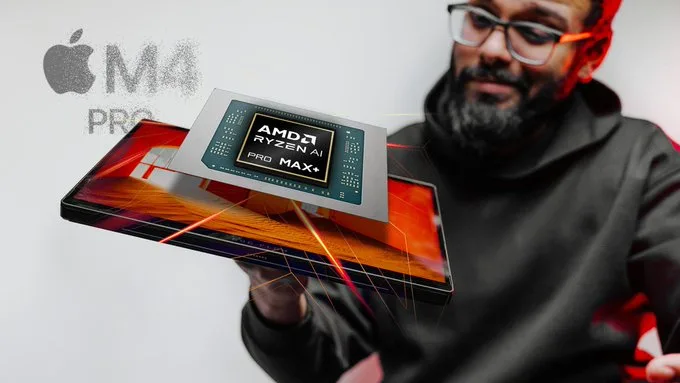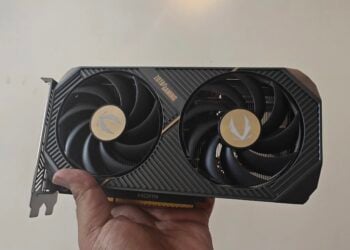AMD Strix Halo X3D: The AMD Strix Halo APUs have already set new performance benchmarks in the mobile computing space, but the latest findings indicate that AMD might not be stopping there. With the presence of Through-Silicon Vias (TSVs) in the die design, AMD is paving the way for the integration of 3D V-Cache technology into its mobile processors. This opens up the possibility of AMD’s “X3D” mobile chips, a potential game-changer for laptop users who demand high-end computing performance.
Table of Contents
AMD Strix Halo X3D: AMDs X3D Mobile Chips: – A Game-Changer? Strix Halo APUs Now Feature Dedicated 3D V-Cache TSVs
A New Era for Mobile APUs: Strix Halo with 3D V-Cache
AMD’s 3D V-Cache technology has already made waves in the desktop and server markets by significantly enhancing L3 cache capacity, improving performance in cache-sensitive workloads. Now, with the discovery of TSVs on Strix Halo’s die (via ASUS China), the potential for X3D mobile chips is stronger than ever. The TSVs facilitate the stacking of additional cache directly onto the L3 cache, promising substantial performance gains in select applications, particularly gaming and compute-heavy tasks.
How AMD’s New Interconnect Design Enhances Efficiency
In addition to TSVs, the Strix Halo APUs feature a new interconnect design that significantly reduces the physical footprint. Unlike the traditional SERDES (Serializer/Deserializer) approach seen in desktop Zen 5 Ryzen 9000 CPUs, the new ‘sea of wires’ interconnect system trims down the footprint by 42.3%. This translates to a 0.34mm reduction in CCD size, leading to lower latency, improved power efficiency, and a more compact chip layout. These advancements hint at a future-proof design, possibly setting the stage for Zen 6.
What Does This Mean for Strix Halo Laptops?
Even without the X3D variant, Strix Halo chips, such as the Ryzen AI Max+ 395, are already making headlines. The integrated Radeon 8060S GPU is competing with NVIDIA’s GeForce RTX 4070 laptop GPU, allowing gamers to enjoy ultra-settings performance without needing a discrete graphics card. The addition of 3D V-Cache could further bolster AMD’s dominance in the mobile gaming and workstation segment.
The Road to X3D Mobile Chips
The presence of TSVs in Strix Halo APUs suggests that AMD is preparing for the next leap in mobile processor technology. If an X3D variant becomes a reality, it could redefine expectations for mobile computing performance, making AMD a leader in both power efficiency and raw computing capability. While no official confirmation has been made, the evidence strongly supports the possibility of Strix Halo X3D processors in the near future.
FAQs
What is AMD’s 3D V-Cache technology?
3D V-Cache is a technology that stacks additional L3 cache on top of the CPU, enhancing performance in cache-sensitive applications like gaming and heavy computing tasks.
How do TSVs contribute to 3D V-Cache integration?
TSVs (Through-Silicon Vias) enable direct stacking of cache on the L3 cache, improving memory access speed and efficiency.








